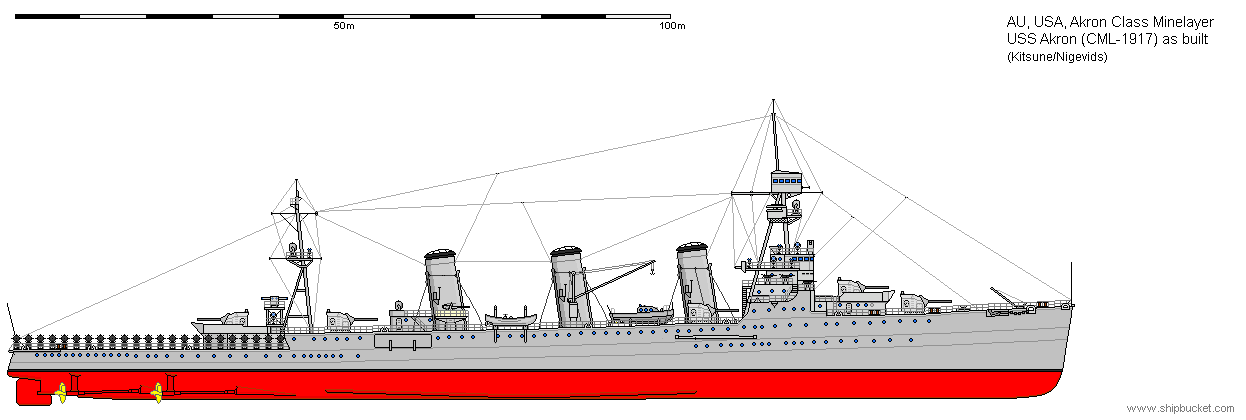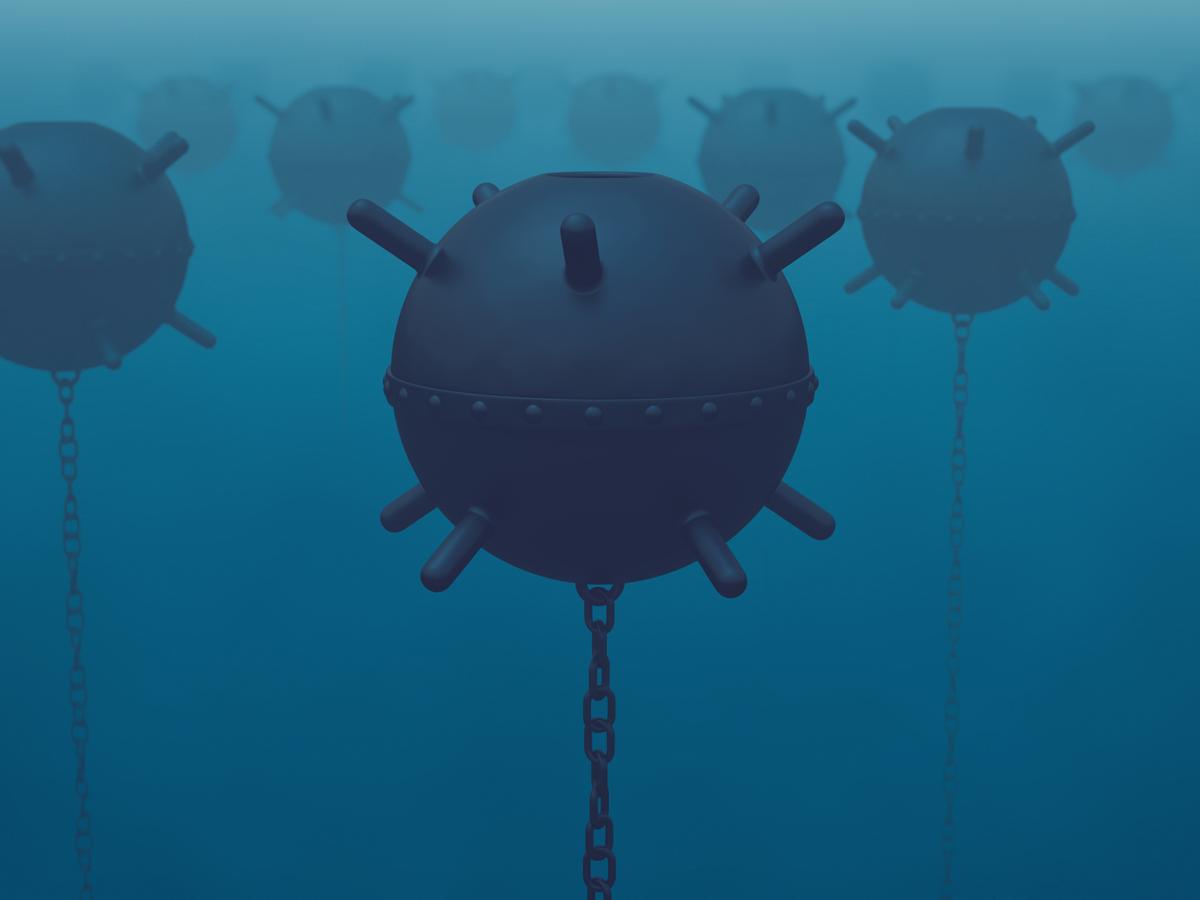Minefields come in two types, defensive and offensive. Defensive minefields you lay around your own coastlines to keep out enemy shipping. Your own shipping can pass through these fields unharmed as they would have the map to where the mines are. These defensive minefields can be maintained by any type of vessel that can have a few mines aboard to replace those that may have become loose and/or exploded. Laying those fields would be done by specialised minelayers that could carry a large number of mines (400+) at a reasonable speed (usually around 25-30 knots). To supplement this laying of defensive minefields, destroyers could be used to carry 30-40 mines to speed up the process or lay fields around smaller areas (like Midway Island).
Offensive minefields are those laid in enemy waters without their knowledge. Those are there to sink enemy ships who are sailing through what they think is safe waters only to run into a minefield and find it the hard way, boom! Eventually three methods of laying these minefields came in to practice:
1. Submarines. Special minelaying submarines were built during the inter-war period and they were very good at laying offensive minefields but could only carry a small number of mines.
2. Aircraft. could be used to carry a few mines and drop them into position. A squadron could lay a decent field but because this was in enemy waters they would be open to interception by enemy fighters during both day and night raids. The enemy would also be aware that a new field had been laid and would be actively looking for it.
3. Minelayers. These minelayers are specially built, generally of cruiser size and are fast. WW1 brought these ships into service. Germany built the pair of Bremse class minelayers for laying fields along the coast of Britain. The idea is to leave your port get to your drop point, in darkness, lay your field, then get out of enemy waters and sight before daylight so that the enemy would be unaware of the new field until one of their ships found it.

So those were the theories when the US Navy laid down its Akron class minelayer in 1916. Up until the US entered the war in 1917, its diplomats (spies) could observe what both sides were building in the way of new shipping. The German cruisers Bremse and Brummer were specially designed minelayers. A type of ship the US Navy felt would be of use in the future. The design would form the hull design for the later Scout Cruisers built a few years later. Armament was kept at a modest level as it was felt the only ships that might catch the Akron were enemy destroyers. Six of the common 5"/51cal low angle guns were fitted in single backless mountings. Two inline forward, two beside the fore funnel, and two inline aft, either side of the aft mast. The armament was finished with two 3" AA guns beside the aft funnel and four Browning 0.5" machine guns around the bridge.
The Akron proved the concept for the US Navy and was used for offensive minelaying into the mouth of the Skagerak during late 1917 and 1918. The Akron was also involved with British forces at the Second Battle of Heligoland Bight, assisting in the sinking of the Kronprinz Wilhelm and nine minesweeping trawlers.
Post war the Akron was sent to the Pacific and the Anti-Piracy patrol operating from the Philippines. The pirates lair would be found and the Akron would lay a small field off the mouth of the Bay/River that contained the pirates until one of the Puerto Rico class monitors arrived with its big guns and spotter aircraft to blast the menace out of existence. On one such trip, in 1927, the Akron had an accident in the mine handling department and blew itself out of existence.
